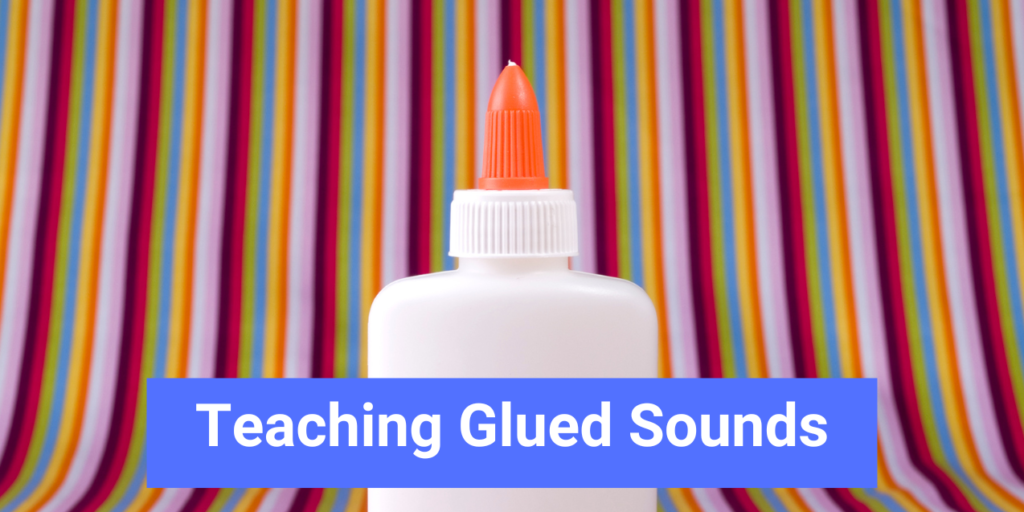Engaging Activities for Teaching Glued Sounds
Have you ever asked what is a glued sound? Do you feel stuck when teaching glued sounds? (Pun intended) Teaching glued sounds (also known as welded sounds) can be challenging, but it doesn’t have to be! With the right tools and techniques, your students will be mastering those tricky sounds in no time. Read on to learn about welded or glued sound words, examples, and innovative ways to teach them.
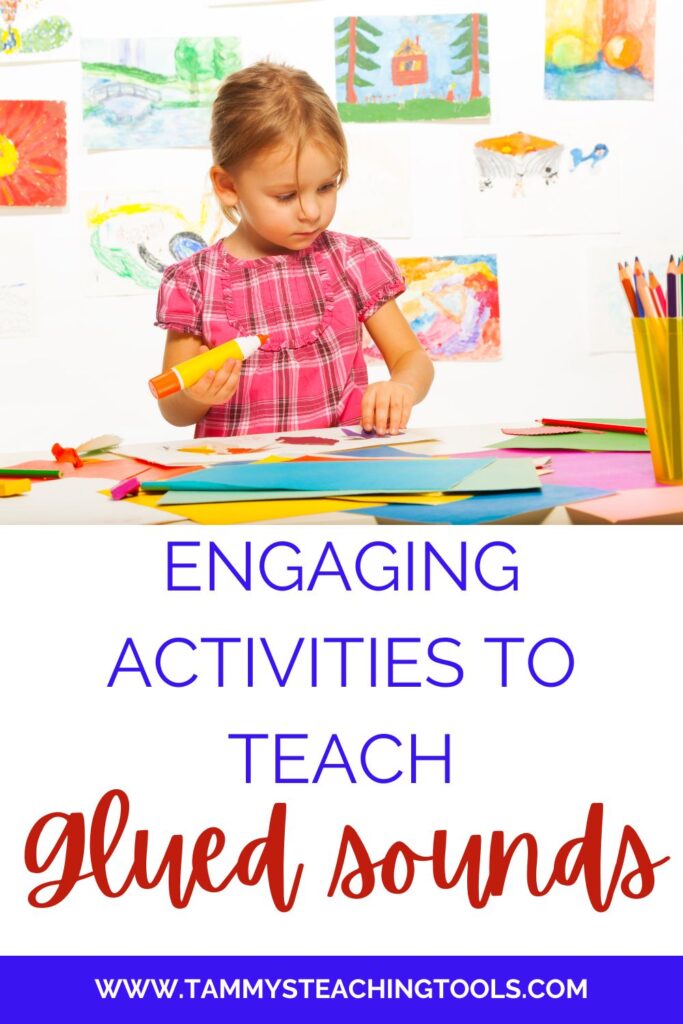
What are Glued Sounds?
Glued sounds are also known as welded sounds. In this article, I use both terms interchangeably. Glued sounds are groups of letters whose distinct sounds are difficult to separate. Teaching these sounds as word families makes them easier to recognize and decode.
These are sounds that, when they are together, do not say their normal sounds, but create a slightly different sound. You could explain it this way: A welded sound in phonics is when two letters come together and make a new sound. It’s like they get stuck together like two pieces of metal that are welded. For example, the letters “a” and “n” in the word “pan” are welded together to make the sound “an.”
You could also demonstrate this by gluing three pieces of paper together with the individual letters on them. Model the sound each letter makes separately and the sound they make when they are “glued” together.
The welded sounds are the following: all, am, an, ang, ing, ong, ung, ank, ink, onk, unk.
Some programs do not include all, am, and an as welded sounds. The /a/ sound in these chunks pick up a nasal sound when it is before the letters m or n. Follow the sequence for your program.
Glued sounds are always at the end of a syllable or word.
Glued Sound Words and Examples
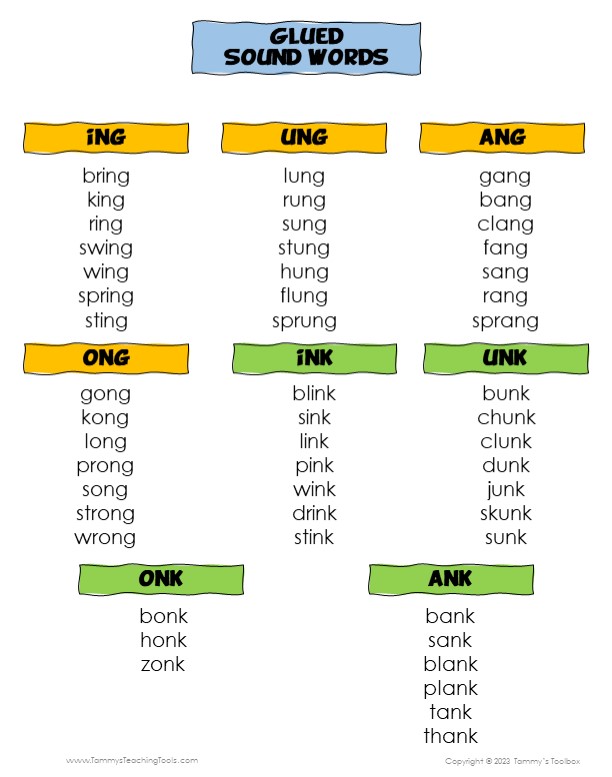
Use Visuals
Using visuals is an effective way to help children learn glued sounds because they can use their senses of sight and hearing together. You can create visual aids like posters, charts, or flashcards that feature the various words associated with each sound.
For example, for the /ing/ sound you could create a poster with pictures of a king and a ring. This gives them a visual reminder of each word when they are trying to pronounce it correctly. Visual aids also encourage participation from all your students in the classroom!
Here is a great interactive glued sound chart. This is available free in my resource library.
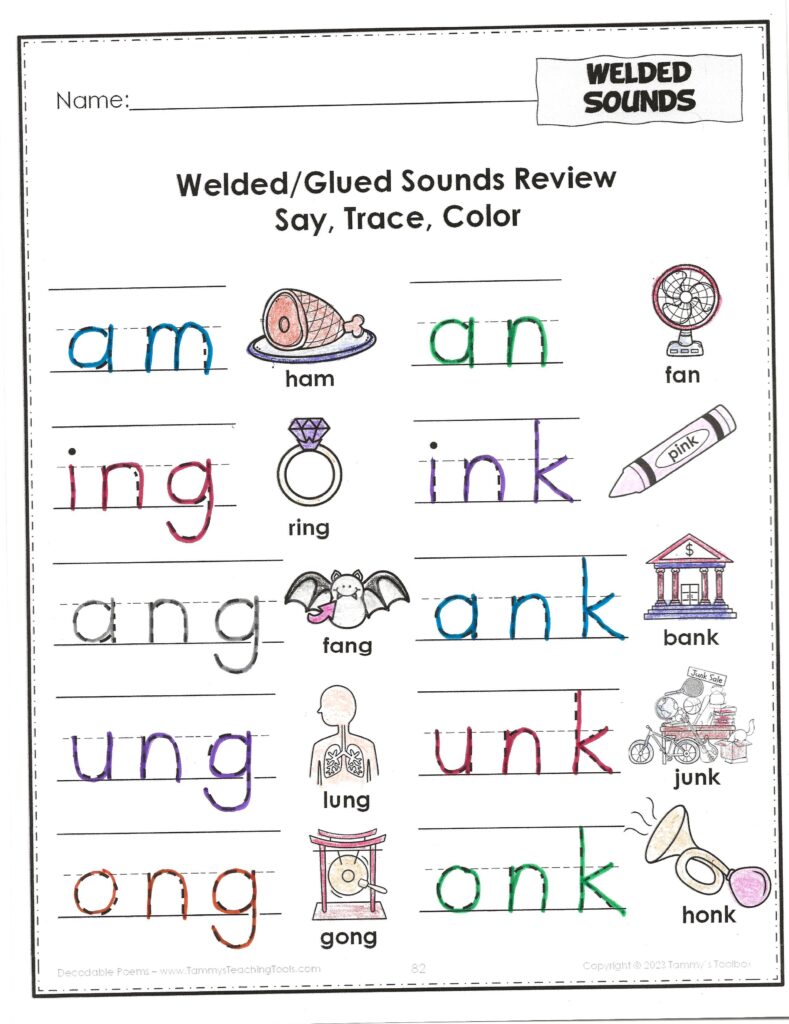
 When introducing glued sounds, use phonogram cards for each chunk: ink, ank, onk, unk, ing, ang, ong, ung. These help students by giving them a keyword to cue them. Introduce one sound at a time and provide plenty of practice before moving on to the next.
When introducing glued sounds, use phonogram cards for each chunk: ink, ank, onk, unk, ing, ang, ong, ung. These help students by giving them a keyword to cue them. Introduce one sound at a time and provide plenty of practice before moving on to the next.
Alphabet and phonics charts have over 200 posters with sounds and keywords, including all of the welded/glued sounds. They are available in 14 fun themes. Go to Tammy’s Toolbox to see them all.
Read
Use decodable text that focuses on the specific glued sound you are teaching. For example, if you taught /ank/, use a decodable text focusing on /ank/ words.
Remember that decodable texts are controlled to have mostly words, sentences, and skills that students have already learned. The only new skill in the text is the target skill. This ensures students are working on the target skill.
These decodable poems focusing on glued sounds are a fun and easy way to practice this skill.
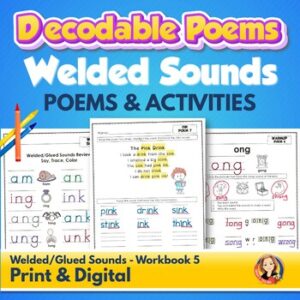
Use Games
Make learning fun by incorporating games and activities into your lesson plan when teaching glued sounds. Using games such as bingo or memory cards can help reinforce what they have learned while still being entertaining and engaging. For instance, you could make a bingo game using pictures of words with glued sounds instead of numbers. You could also make memory cards with pictures of words on one side and their corresponding glued sound on the other side so they can practice matching them up correctly. These types of activities are great for helping children learn in an enjoyable atmosphere where they don’t feel overwhelmed or bored by the material.
Here is a fun Welded/Glued sound Bingo Game to get you started. It is great for reviewing after each sound has been introduced.
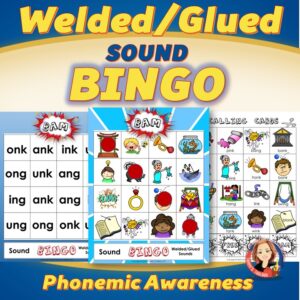
Use Elkonin sound boxes, finger tapping, phonogram cards, or other manipulatives to have students blend and segment words with glued sounds.
Word sorts are always a good idea when practicing any phonics skill. Have students look for words and sort them, sort from a list or decks of flashcards, or complete a sorting worksheet.
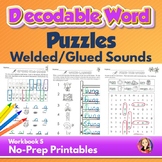
Teaching glued sounds should be fun and engaging! Incorporate interactive activities like reading or games into your lessons along with visual aids to help reinforce concepts in a creative way that keeps your students interested in learning. With these helpful tips, you will be helping your students master those tricky glued sounds in no time!
Happy Teaching

Before you go, check out these posts.
Awesome Ways to Use Word Puzzles to Teach Phonics
Bingo Activities for Phonemic Awareness


